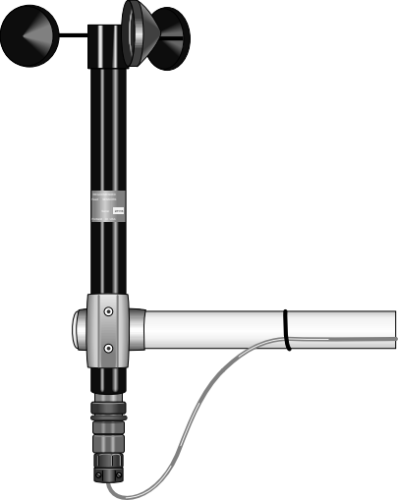Leading Functions to Try To Find in a Reliable Anemometer for Accurate Wind Measurement
All You Need to Find Out About Anemometers: Just How They Function, Why They Matter, and Where to Utilize Them
Anemometers, though often neglected in the world of scientific tools, play a crucial role in different areas, offering important understandings right into wind rate and air flow patterns. As we dive right into the ins and outs of anemometer modern technology, we will certainly uncover the inner workings of these gadgets, their value, and the vital considerations when picking the right anemometer for certain applications.

Anemometer Basics
A crucial tool used to determine wind speed and direction, the anemometer plays a vital role in weather forecasting and numerous industries. An anemometer normally is composed of three or four mugs that revolve in the wind, a vane that points right into the wind, and sensing units to track the movements or rotations.
There are various kinds of anemometers available, including cup anemometers, vane anemometers, hot-wire anemometers, and sonic anemometers, each with its special features and applications. Cup anemometers are typically made use of for standard wind rate measurements, while vane anemometers are chosen for directional dimensions. Hot-wire anemometers appropriate for low airspeeds, and sonic anemometers are ideal for high-precision measurements in study and commercial settings. Comprehending the essentials of anemometers is necessary for accurate wind data collection and analysis throughout different industries.
Concepts of Anemometer Procedure
Building on the fundamental understanding of anemometer fundamentals, the principles of anemometer operation elucidate the mechanics behind wind speed and instructions dimensions. Cup anemometers, for instance, have 3 or even more mugs that capture the wind, triggering them to spin much faster as the wind speed rises. Hot-wire anemometers count on a heated cable that cools down as wind passes over it, with the price of cooling down determining the wind speed.
Value of Anemometers
The significance of anemometers in meteorology and various industries can not be overemphasized. Anemometers play a vital function in determining wind speed and instructions, providing vital information for climate forecasting, climate researches, ecological tracking, and air travel procedures. Meteorologists rely upon anemometers to gather exact wind data, helping them recognize weather condition patterns, forecast tornados, and issue timely warnings to the general public. In industries such as building, agriculture, renewable resource, and maritime procedures, anemometers are made use of to optimize processes, make sure safety visit their website and security, and enhance effectiveness. For instance, wind farm operators use anemometers to evaluate wind problems and optimize electrical power production from wind generators. In the maritime sector, anemometers help ship navigating by giving real-time wind information to captains, aiding them make notified choices to guarantee safe voyages. On the whole, anemometers are crucial devices that contribute dramatically to safety, performance, and notified decision-making in meteorology and a wide range of markets.
Applications Across Numerous Industries
In the renewable power field, anemometers play an essential function in evaluating wind conditions for wind ranch positionings, guaranteeing optimal power manufacturing. Industries like building and mining make use of anemometers to keep track of wind speeds, important for safety methods, especially when functioning at heights or in open-pit mines where strong winds can pose risks. In agriculture, anemometers aid farmers in taking care of crop splashing by supplying real-time data on wind rate to stay clear of drift.

Choosing the Right Anemometer for Your Requirements
Picking the proper anemometer customized to your details requirements is essential for obtaining exact wind rate and direction measurements. When picking an anemometer, think about aspects such as the designated application, called for dimension array, ecological conditions, and desired functions. For basic functions, a cup anemometer appropriates for measuring wind rate, while a vane anemometer supplies wind direction data. Hot-wire anemometers are suitable for low airspeed dimensions, and ultrasonic anemometers offer high precision and toughness.

Final Thought
In verdict, anemometers play an essential function in measuring wind rate and direction across numerous sectors. It is crucial to take into consideration the significance of anemometers in order to make enlightened decisions Clicking Here when selecting the most ideal gadget for measuring wind problems.
There are different types of anemometers readily available, consisting of mug anemometers, vane anemometers, hot-wire anemometers, and sonic anemometers, each with its special features and applications. Cup anemometers are frequently used for basic wind rate dimensions, while vane anemometers are preferred for directional dimensions. Hot-wire anemometers are suitable for low airspeeds, and sonic anemometers are excellent for high-precision measurements in research study and commercial settings.Structure on the foundational understanding of anemometer essentials, the principles of anemometer operation elucidate the auto mechanics behind wind speed and instructions measurements. For general purposes, a cup anemometer is suitable for measuring wind rate, while a vane anemometer gives wind direction information.